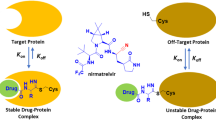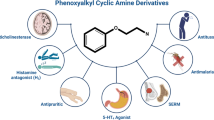Abstract
The concept of functional selectivity offers great potential for the development of drugs that selectively activate a specific intracellular signaling pathway. During the last few years, it has become possible to systematically analyse compound libraries on G protein-coupled receptors (GPCRs) for this ‘biased’ form of signaling. We screened over 800 compounds targeting the class of adenosine A1 receptors using a β-arrestin-mediated signaling assay in U2OS cells as a G protein-independent readout for GPCR activation. A selection of compounds was further analysed in a G protein-mediated GTPγS assay. Additionally, receptor affinity of these compounds was determined in a radioligand binding assay with the agonist [3H]CCPA. Of all compounds tested, only LUF5589 9 might be considered as functionally selective for the G protein-dependent pathway, particularly in view of a likely overestimation of β-arrestin signaling in the U2OS cells. Altogether, our study shows that functionally selective ligands for the adenosine A1 receptor are rare, if existing at all. A thorough analysis of biased signaling on other GPCRs also reveals that only very few compounds can be considered functionally selective. This might indicate that the concept of functional selectivity is less common than speculated.





Similar content being viewed by others
References
Fredholm BB, IJzerman AP, Jacobson KA, Linden J, Müller CE (2011) International Union of Basic and Clinical Pharmacology. LXXXI. Nomenclature and classification of adenosine receptors—an update. Pharmacol Rev 63(1):1–34. doi:10.1124/pr.110.003285
Verzijl D, IJzerman AP (2011) Functional selectivity of adenosine receptor ligands. Purinergic Signal 7(2):171–192. doi:10.1007/s11302-011-9232-0
Rajagopal S, Rajagopal K, Lefkowitz RJ (2010) Teaching old receptors new tricks: biasing seven-transmembrane receptors. Nat Rev Drug Discov 9(5):373–386. doi:10.1038/nrd3024
Patel CB, Noor N, Rockman HA (2010) Functional selectivity in adrenergic and angiotensin signaling systems. Mol Pharmacol 78(6):983–992. doi:10.1124/mol.110.067066
Kenakin T (2011) Functional selectivity and biased receptor signaling. J Pharmacol Exp Ther 336(2):296–302. doi:10.1124/jpet.110.173948
Whalen EJ, Rajagopal S, Lefkowitz RJ (2011) Therapeutic potential of beta-arrestin- and G protein-biased agonists. Trends Mol Med 17(3):126–139. doi:10.1016/j.molmed.2010.11.004
Klaasse EC, van den Hout G, Roerink SF, de Grip WJ, IJzerman AP, Beukers MW (2005) Allosteric modulators affect the internalization of human adenosine A1 receptors. Eur J Pharmacol 522(1–3):1–8. doi:10.1016/j.ejphar.2005.08.052
van Tilburg EW, van der Klein PA, von Frijtag Drabbe Kunzel J, de Groote M, Stannek C, Lorenzen A, IJzerman AP (2001) 5′-O-alkyl ethers of N,2-substituted adenosine derivatives: partial agonists for the adenosine A1 and A3 receptors. J Med Chem 44(18):2966–2975
Gao ZG, Jacobson KA (2008) Translocation of arrestin induced by human A3 adenosine receptor ligands in an engineered cell line: comparison with G protein-dependent pathways. Pharmacol Res 57(4):303–311. doi:10.1016/j.phrs.2008.02.008
Wanner MJ, Von Frijtag Drabbe Kunzel JK, IJzerman AP, Koomen GJ (2000) 2-Nitro analogues of adenosine and 1-deazaadenosine: synthesis and binding studies at the adenosine A1, A2A and A3 receptor subtypes. Bioorg Med Chem Lett 10(18):2141–2144
Barnea G, Strapps W, Herrada G, Berman Y, Ong J, Kloss B, Axel R, Lee KJ (2008) The genetic design of signaling cascades to record receptor activation. Proc Natl Acad Sci U S A 105(1):64–69. doi:10.1073/pnas.0710487105
Klaasse EC, IJzerman AP, de Grip WJ, Beukers MW (2008) Internalization and desensitization of adenosine receptors. Purinergic Signal 4(1):21–37. doi:10.1007/s11302-007-9086-7
Gao ZG, Ye K, Goblyos A, IJzerman AP, Jacobson KA (2008) Flexible modulation of agonist efficacy at the human A3 adenosine receptor by the imidazoquinoline allosteric enhancer LUF6000. BMC Pharmacol 8:20. doi:10.1186/1471-2210-8-20
Reiter E, Ahn S, Shukla AK, Lefkowitz RJ (2012) Molecular mechanism of beta-arrestin-biased agonism at seven-transmembrane receptors. Annu Rev Pharmacol Toxicol 52:179–197. doi:10.1146/annurev.pharmtox.010909.105800
Rajagopal S, Ahn S, Rominger DH, Gowen-MacDonald W, Lam CM, Dewire SM, Violin JD, Lefkowitz RJ (2011) Quantifying ligand bias at seven-transmembrane receptors. Mol Pharmacol 80(3):367–377. doi:10.1124/mol.111.072801
Drake MT, Violin JD, Whalen EJ, Wisler JW, Shenoy SK, Lefkowitz RJ (2008) Beta-arrestin-biased agonism at the beta2-adrenergic receptor. J Biol Chem 283(9):5669–5676. doi:10.1074/jbc.M708118200
Reiter E, Lefkowitz RJ (2006) GRKs and beta-arrestins: roles in receptor silencing, trafficking and signaling. Trends Endocrinol Metab 17(4):159–165. doi:10.1016/j.tem.2006.03.008
de Ligt RA, van der Klein PA, von Frijtag Drabbe Kunzel JK, Lorenzen A, Ait El Maate F, Fujikawa S, van Westhoven R, van den Hoven T, Brussee J, IJzerman AP (2004) Synthesis and biological evaluation of disubstituted N6-cyclopentyladenine analogues: the search for a neutral antagonist with high affinity for the adenosine A1 receptor. Bioorg Med Chem 12(1):139–149
Chang LC, von Frijtag Drabbe Kunzel JK, Mulder-Krieger T, Spanjersberg RF, Roerink SF, van den Hout G, Beukers MW, Brussee J, IJzerman AP (2005) A series of ligands displaying a remarkable agonistic-antagonistic profile at the adenosine A1 receptor. J Med Chem 48(6):2045–2053. doi:10.1021/jm049597+
van Veldhoven JP, Chang LC, von Frijtag Drabbe Kunzel JK, Mulder-Krieger T, Struensee-Link R, Beukers MW, Brussee J, IJzerman AP (2008) A new generation of adenosine receptor antagonists: from di- to trisubstituted aminopyrimidines. Bioorg Med Chem 16(6):2741–2752. doi:10.1016/j.bmc.2008.01.013
Chang LC, Spanjersberg RF, von Frijtag Drabbe Kunzel JK, Mulder-Krieger T, van den Hout G, Beukers MW, Brussee J, IJzerman AP (2004) 2,4,6-trisubstituted pyrimidines as a new class of selective adenosine A1 receptor antagonists. J Med Chem 47(26):6529–6540. doi:10.1021/jm049448r
Chang LC, Spanjersberg RF, von Frijtag Drabbe Kunzel JK, Mulder-Krieger T, Brussee J, IJzerman AP (2006) 2,6-disubstituted and 2,6,8-trisubstituted purines as adenosine receptor antagonists. J Med Chem 49(10):2861–2867. doi:10.1021/jm050640i
Chang LC, von Frijtag Drabbe Kunzel JK, Mulder-Krieger T, Westerhout J, Spangenberg T, Brussee J, IJzerman AP (2007) 2,6,8-trisubstituted 1-deazapurines as adenosine receptor antagonists. J Med Chem 50(4):828–834. doi:10.1021/jm0607956
Lane JR, Klaasse E, Lin J, van Bruchem J, Beukers MW, IJzerman AP (2010) Characterization of [3H]LUF5834: a novel non-ribose high-affinity agonist radioligand for the adenosine A1 receptor. Biochem Pharmacol 80(8):1180–1189. doi:10.1016/j.bcp.2010.06.041
Göblyös A, Santiago SN, Pietra D, Mulder-Krieger T, von Frijtag Drabbe Kunzel J, Brussee J, IJzerman AP (2005) Synthesis and biological evaluation of 2-aminothiazoles and their amide derivatives on human adenosine receptors. Lack of effect of 2-aminothiazoles as allosteric enhancers. Bioorg Med Chem 13(6):2079–2087. doi:10.1016/j.bmc.2005.01.006
van Tilburg EW, von Frijtag Drabbe Kunzel J, de Groote M, IJzerman AP (2002) 2,5′-Disubstituted adenosine derivatives: evaluation of selectivity and efficacy for the adenosine A1, A2A, and A3 receptor. J Med Chem 45(2):420–429
van Tilburg EW, van der Klein PA, de Groote M, Beukers MW, IJzerman AP (2001) Substituted 4-phenyl-2-(phenylcarboxamido)-1,3-thiazole derivatives as antagonists for the adenosine A1 receptor. Bioorg Med Chem Lett 11(15):2017–2019
Mantri M, de Graaf O, van Veldhoven J, Goblyos A, von Frijtag Drabbe Kunzel JK, Mulder-Krieger T, Link R, de Vries H, Beukers MW, Brussee J, IJzerman AP (2008) 2-Amino-6-furan-2-yl-4-substituted nicotinonitriles as A2A adenosine receptor antagonists. J Med Chem 51(15):4449–4455. doi:10.1021/jm701594y
Beukers MW, Chang LC, von Frijtag Drabbe Kunzel JK, Mulder-Krieger T, Spanjersberg RF, Brussee J, IJzerman AP (2004) New, non-adenosine, high-potency agonists for the human adenosine A2B receptor with an improved selectivity profile compared to the reference agonist N-ethylcarboxamidoadenosine. J Med Chem 47(15):3707–3709. doi:10.1021/jm049947s
van Muijlwijk-Koezen JE, Timmerman H, Vollinga RC, Frijtag von Drabbe Kunzel J, de Groote M, Visser S, IJzerman AP (2001) Thiazole and thiadiazole analogues as a novel class of adenosine receptor antagonists. J Med Chem 44(5):749–762
Beukers MW, Wanner MJ, Von Frijtag Drabbe Kunzel JK, Klaasse EC, IJzerman AP, Koomen GJ (2003) N 6-cyclopentyl-2-(3-phenylaminocarbonyltriazene-1-yl)adenosine (TCPA), a very selective agonist with high affinity for the human adenosine A1 receptor. J Med Chem 46(8):1492–1503. doi:10.1021/jm021074j
van Tilburg EW, Gremmen M, von Frijtag Drabbe Kunzel J, de Groote M, IJzerman AP (2003) 2,8-Disubstituted adenosine derivatives as partial agonists for the adenosine A2A receptor. Bioorg Med Chem 11(10):2183–2192
van Muijlwijk-Koezen JE, Timmerman H, van der Goot H, Menge WM, Frijtag Von Drabbe Kunzel J, de Groote M, IJzerman AP (2000) Isoquinoline and quinazoline urea analogues as antagonists for the human adenosine A3 receptor. J Med Chem 43(11):2227–2238
van Muijlwijk-Koezen JE, Timmerman H, Link R, van der Goot H, IJzerman AP (1998) A novel class of adenosine A3 receptor ligands. 1. 3-(2-pyridinyl)isoquinoline derivatives. J Med Chem 41(21):3987–3993. doi:10.1021/jm980036q
van Tilburg EW, von Frijtag Drabbe Kunzel J, de Groote M, Vollinga RC, Lorenzen A, IJzerman AP (1999) N 6,5′-disubstituted adenosine derivatives as partial agonists for the human adenosine A3 receptor. J Med Chem 42(8):1393–1400. doi:10.1021/jm981090+
Ingkaninan K, IJzerman AP, Verpoorte R (2000) Luteolin, a compound with adenosine A1 receptor-binding activity, and chromone and dihydronaphthalenone constituents from Senna siamea. J Nat Prod 63(3):315–317
van Muijlwijk-Koezen JE, Timmerman H, Link R, van der Goot H, IJzerman AP (1998) A novel class of adenosine A3 receptor ligands. 2. Structure affinity profile of a series of isoquinoline and quinazoline compounds. J Med Chem 41(21):3994–4000. doi:10.1021/jm980037i
Kim YC, de Zwart M, Chang L, Moro S, von Frijtag Drabbe Kunzel JK, Melman N, IJzerman AP, Jacobson KA (1998) Derivatives of the triazoloquinazoline adenosine antagonist (CGS 15943) having high potency at the human A2B and A3 receptor subtypes. J Med Chem 41(15):2835–2845. doi:10.1021/jm980094b
Acknowledgments
The authors thank Dr Ken Jacobson for providing MRS541 and MRS542.
Author information
Authors and Affiliations
Corresponding author
Additional information
Ellen V. Langemeijer and Dennis Verzijl contributed equally.
Electronic supplementary material
Below is the link to the electronic supplementary material.
ESM 1
(DOC 473 kb)
Rights and permissions
About this article
Cite this article
Langemeijer, E.V., Verzijl, D., Dekker, S.J. et al. Functional selectivity of adenosine A1 receptor ligands?. Purinergic Signalling 9, 91–100 (2013). https://doi.org/10.1007/s11302-012-9334-3
Received:
Accepted:
Published:
Issue Date:
DOI: https://doi.org/10.1007/s11302-012-9334-3




